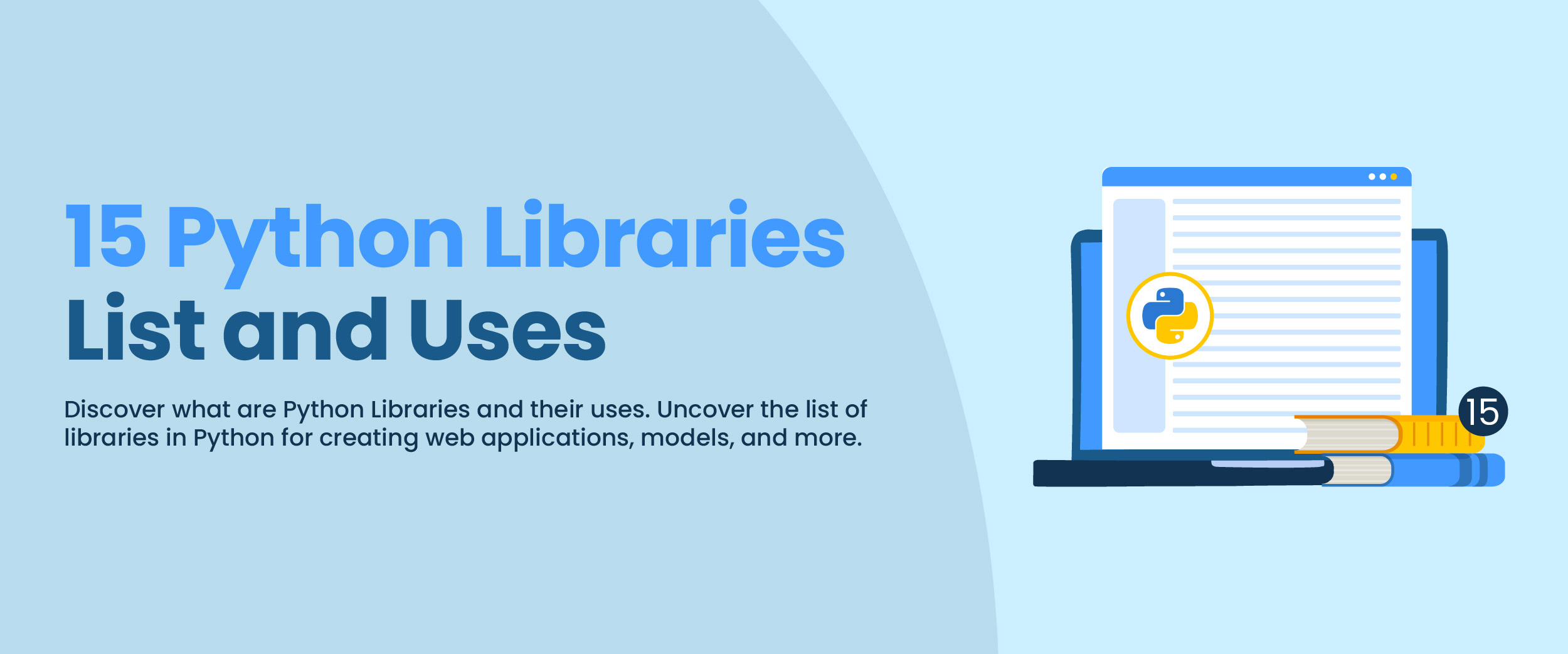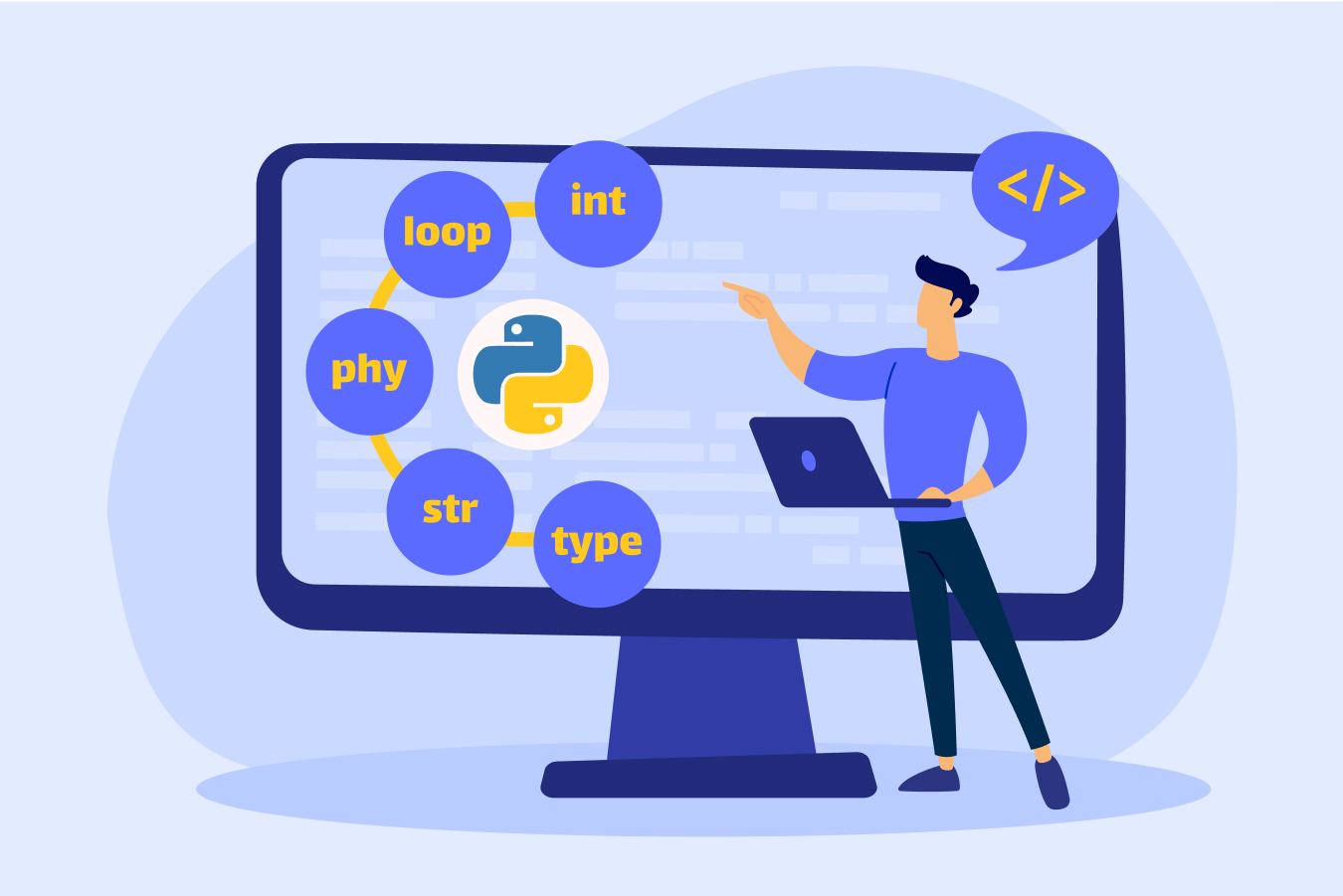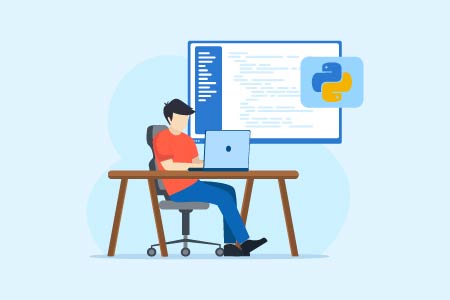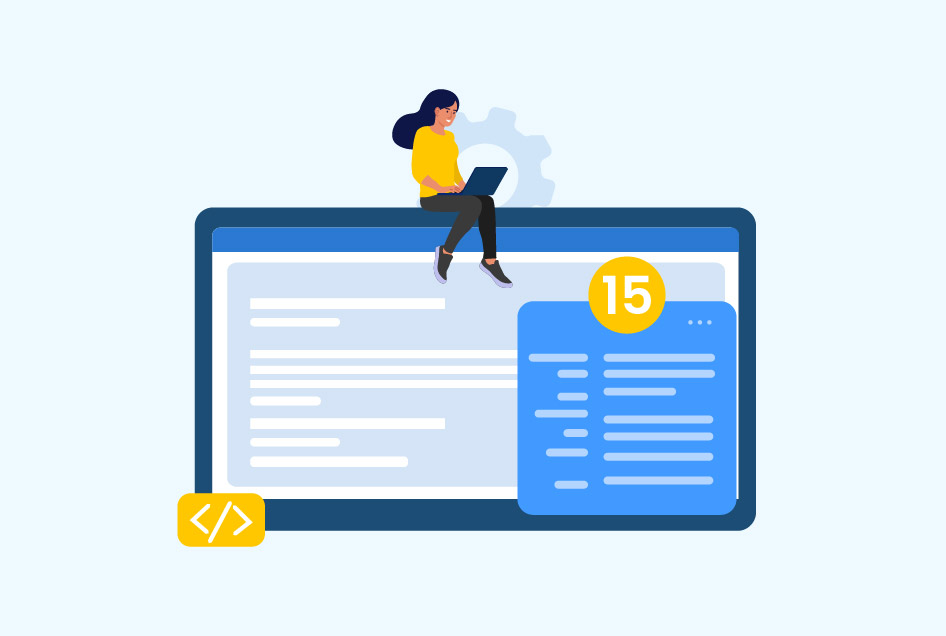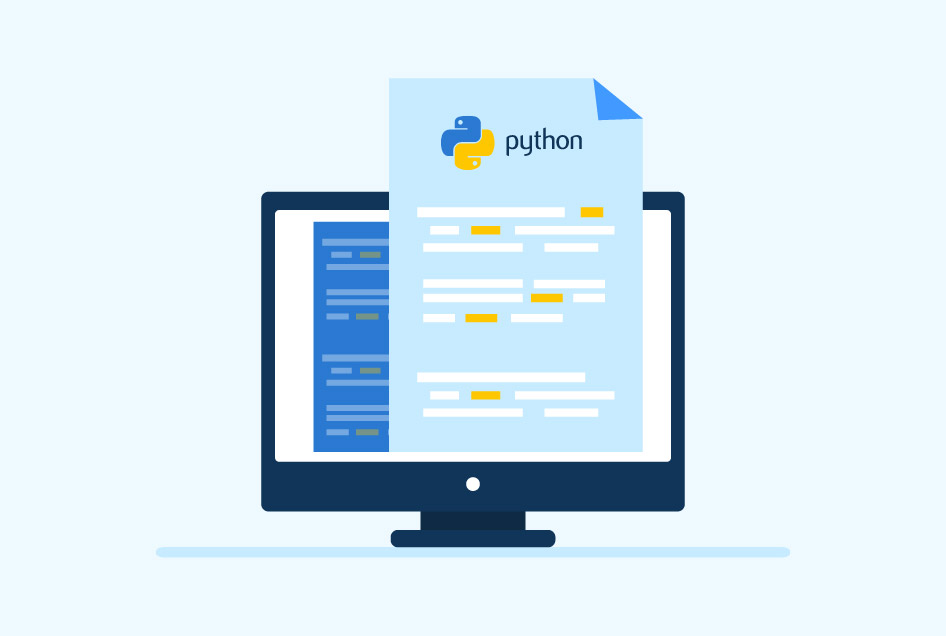15 Python Libraries List and Uses
Python was introduced in the 1980s and since then it has become a popular programming language due to its ability to address real-world problems. It is used in wide-ranging industries like software development, machine learning, and data science. It is because Python offers multiple libraries for the ease of coding to its users. This blog will discuss what is a Python library and various popular libraries used today.
What is Python Library?
A library is a collection of classes, utilities, methods, and modules that can be used in the code of the application to perform specific tasks without having to write the functionalities from scratch.
A Python library is one such collection of related modules that contain bundles of code that can be used repeatedly in different programs. They are important as they make Python programming convenient for the programmer.
Get a confirmed ₹35,000 total stipend on your first internship with our data analyst course with placement.
Various Python Libraries
Python standard library contains exact syntax, semantics, and tokens of Python. It provides access to basic system functionalities like I/O and other core modules. Several other libraries are available for Python. Here is a Python libraries list.
Pandas
Pandas is a BSD or Berkeley Software Distribution licensed open-source library that is used in the field of data science. It allows for simple data modeling and data analysis operations without the need to switch to domain-specific languages such as R.
Uses of Pandas include:
- Slicing of the data frame.
- Joining and merging data frames.
- Concatenate two columns from two different data frames.
- Changing index values in a data frame.
- Changing headers in columns
- Conversion of data into various forms.
One can install Pandas using Conda installation.
NumPy
NumPy or Numerical Python is one of the most widely used open-source libraries of Python. It supports large matrices and multidimensional data and consists of in-built mathematical functions for quick computation. It is why data scientists and developers use it for projects related to artificial intelligence and machine learning.
NumPy uses vectorization for compact but faster computations and supports an object-oriented approach. It provides the foundation for other different libraries in Python such as SciPy and Sci-Kit Learn.
Uses of NumPy include:
- It can be used in linear algebra as a multi-dimensional container for generic data and as a random number generator.
- It simplifies the implementation of difficult mathematical equations as it provides numerical routines in precompiled functions.
- A NumPy interface can be used for representing images, sound waves, and other binary raw streams as an N-dimensional array of real values for visualizations.
Here is how you can install NumPy.
OpenCV Python
OpenCV Python library is a tool apt for computer-vision programs in real-time. It is a highly efficient library that can process various visual inputs from both images and video data. It can identify faces, handwriting, as well as objects.
Uses of OpenCV Python include:
- Computer vision and image processing
- Used to perform tasks like object tracking, face detection, and landmark detection.
- Used for image and video analysis.
You can install OpenCV Python using Anaconda.
Scikit-learn
Scikit-learn is an open-source Python library that is used with both supervised and unsupervised machine learning algorithms. It is based on both NumPy and SciPy. Due to it being user-friendly, it is considered a good choice for beginners. Two popular platforms that use this library are Spotify and Evernote.
Uses of Scikit-learn include:
- It is used for developing algorithms for machine learning and data modeling or statistical modeling.
- It can perform common machine learning and data mining tasks such as dimensionality reduction, classification, regression, etc.
- It is used to check the accuracy of supervised models on unseen data.
- Unsupervised algorithms include clustering, factor analysis, principal component analysis, and unsupervised neural network.
- It is used to extract features from photos and text.
You can learn to install Scikit-learn here.
Keras
Keras is an open-source library that allows one to experiment with deep neural networks quickly. It supports almost all neural network models such as connected, convolutional, pooling, recurrent, and embedding. It runs on both CPU (Central Processing Unit) and GPU (Graphics Processing Unit). Due to its modular design, it is well-suited for cutting-edge research. Since it has a Python-based framework, debugging and exploring different models and projects is easy and simple with Keras.
Several pre-processed data sets and pre-trained models are included in Keras. They are MNIST, VGG, Inception, ResNet, etc. It is advisable to install the TensorFlow backend engine before installing Keras for better performance.
Uses of Keras include:
- It is used for data visualization and modeling.
- It is used by firms that use deep learning to power their products.
Learn how to get started with Keras here.
SciPy
Scipy is another free and open-source library used for technical and scientific computing with large data sets. It is an important library in Python as it is integral for engineering and scientific analysis. Its collections and functions are built upon NumPy and it has in-built functions for solving differential equations.
Uses of SciPy include:
- Data visualization and manipulation
- It is also used for linear algebra and optimization algorithms.
- It is used for image operations including image manipulation.
You can install SciPy installation packages and begin using the library in your Python code.
Scrapy
Scrapy is one of the free and open-source libraries used in Python. It is majorly used for web scraping. It offers a fast and high-level method for crawling websites and extracting structured data. It is built around spiders or self-contained crawlers that have a set of instructions given. Since it abides by the DRY or Doesn’t Repeat Yourself principle, it is easier to make web crawling projects with it.
It also offers a web-crawling shell for the developers to test a website’s behavior and supports exporting scarped data using the command line.
Uses of Scrapy include:
- Web scraping and crawling is the major use of Scrapy.
- It is also used for automated testing and data mining.
You can install Scrapy using this installation guide.
Pygame
Pygame library is used for developing multimedia applications, especially two-dimensional gaming projects in Python. It uses SDL or Simple DirectMedia Layer library and just like it, is highly portable making it viable for a wide variety of platforms and operating systems.
It uses assembly code and optimized C code for implementing core functions. Also, applications developed using Pygame can be ported to Android-powered devices.
Uses of Pygame include:
- 2D game development
- Multimedia app development
Here is how you can get started with Pygame.
TensorFlow
TensorFlow is an open-source library that was developed by Google for machine and deep learning along with workloads in predictive and statistical analysis. The resources and built-in tools of TensorFlow allow the developers to make machine learning and deep learning models and build neural networks easily. TensorFlow has a flexible framework and architecture that allows the library to be used with both CPUs and GPUs. Along with desktop devices, this library can be used on smartphones and servers also.
Uses of TensorFlow include:
- It is used for machine learning and deep learning along with large and complex numerical computations.
- It is used in text-based applications, video detection, speech and image recognition, and time-series analysis.
- It is also used for better visualization of computational graphs.
You can install TensorFlow packages from here.
PyTorch
PyTorch is an open-source library used in data science. It is based on Torch, a framework for the C programming language. PyTorch can create seamless computational graphs that can be changed as long as the Python program is running. The library is capable of executing fast and handling heavy loads. Its flexibility allows it to work with CPUs, GPUs, and even simplified processors. It can be extended using a collection of APIs.
Uses of PyTorch include:
- It is mostly used in deep learning and machine learning applications, including NLP or natural language processing and computer vision.
- It is used for faster and more efficient processing. It is done with the help of tensor computation using GPU acceleration.
Here is an installation guide for PyTorch.
Matplotlib
Matplotlib is one of the best Python libraries that is a SciPy extension used to plot numerical data. It plots high-defined figures such as pie charts, histograms, scatterplots, error charts, and bar graphs. It can work with complex data models created by Pandas and data structures created by NumPy.
Though it has a limitation of being able to do only 2D plotting, it is considered a good alternative to the paid solution, MATLAB.
Uses of Matplotlib include:
- It is used for data visualizations.
- It is used to create bar graphs, diagrams, scatter plots, etc.
- It is used for data analysis.
You can install Matplotlib from here.
Eli5
The Eli5 Python programming library is used to address the problem of inaccurate predictions in a machine-learning model. It helps with the visualization and debugging of machine learning models along with tracking an algorithm’s working processes. It supports other libraries such as XGBoost, lightning, and Scikit-learn.
Uses of Eli5 include:
- It is used to inspect machine learning classifiers and explain their predictions.
- It is used to debug algorithms.
- It is used in industries where legacy software and innovative approaches are being implemented.
You can install the Eli5 packages from here.
Theano
Next in the Python libraries list and uses is Theanos. With it, the users can define, optimize, and evaluate mathematical expressions. It uses massive multidimensional arrays for efficient mathematical expressions. Its rich library allows it to implement the code quickly. It can also recognize and compute unstable expressions.
Theano is designed in a way that it can handle deep learning’s massive neural network algorithms. In it, the expressions are specified in an abstract sense, then compiled, and finally used to perform calculations. Also, It works faster with GPU than with CPU.
Use of Theano includes:
- Evaluating, analyzing, and manipulating mathematical expressions.
- To perform intensive data computations.
- Creates deep learning models using multidimensional arrays.
- It is used to perform derivatives with one or more inputs using efficient symbolic differentiation.
- It is used for detecting and diagnosing problems in the models. It is done with extensive unit testing and self-verification.
You can get Theano from here.
PyBrain
PyBrain is a Python Based Reinforcement Learning, Artificial Intelligence, and Neural Networks library. It provides users with fast and easy-to-use algorithms for machine learning tasks. Because of its flexibility new developers find it much easier to use as compared to other libraries.
Uses of PyBrain include:
- It is used for machine learning.
- It is also used for data visualization.
- Another use is training and testing of data.
You can download and install PyBrain.
NLTK
NLTK or Natural Language Toolkit is a popular open-source Python library. It has a set of processing libraries that provide processing solutions for numerical and symbolic language processing in English only. It also has a dynamic discussion forum that allows one to discuss and bring up any issue related to NLTK.
Uses of NLTK include:
- It is used to develop NLP applications and analyze text data.
- A wide range of tasks such as tokenization, stemming, lemmatization, parsing, and sentiment analysis is done using the NLTK library interface.
You can install NLTK from here.
Learn more about the basics of programming in Python through an online Python Course.
Conclusion
Python is already being used in popular applications such as Spotify, Youtube, Dropbox, etc. so it is safe to say that it will continue to be in use for a long time. Learning about various Python libraries will only enhance your skills as a developer or programmer. Keep an eye out for the upgrades on these libraries to ensure you are working along the trend.
FAQs
Python libraries are used to create applications and models for a variety of fields such as deep learning, machine learning, software engineering, data science, etc.
Yes, most of the Python libraries are free. Python is developed under open source initiative, hence it is free to use and distribute.
You need to import the required library in Python code and then you can begin using various functions of the imported library.
You can list all libraries in Python using the following two ways:
a) The “help” function: Type help(“modules”) and all the installed libraries on the system will be displayed.
b) The “python-pip”: Type the following code to show the installed libraries:
sudo apt-get install python-pip
pip freeze
NumPy, SciPy, Pandas, Matplotlib, Keras, and TensorFlow are some examples of Python libraries.
Libraries are a collection of modules linked together. The code bundles can be used again and again. Hence, once the user has imported the library in Python code, there is no need to write code for the related functions repeatedly.

